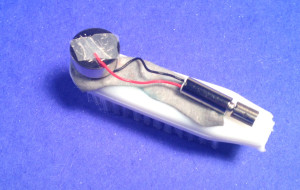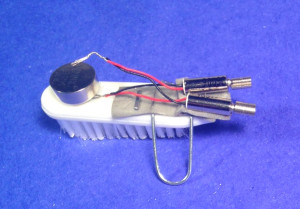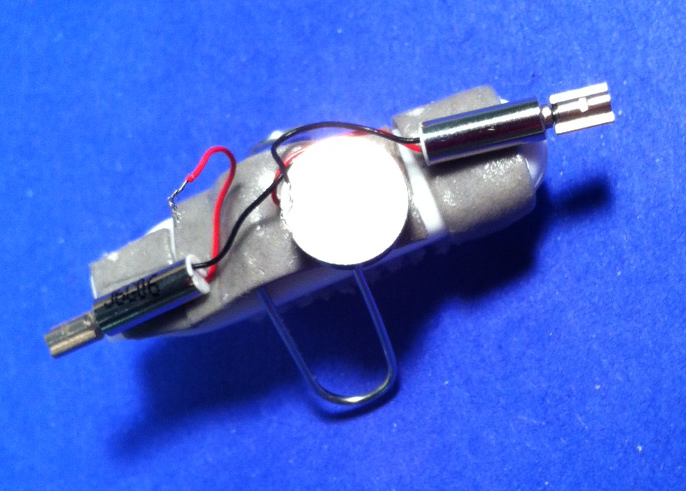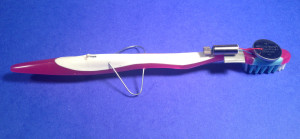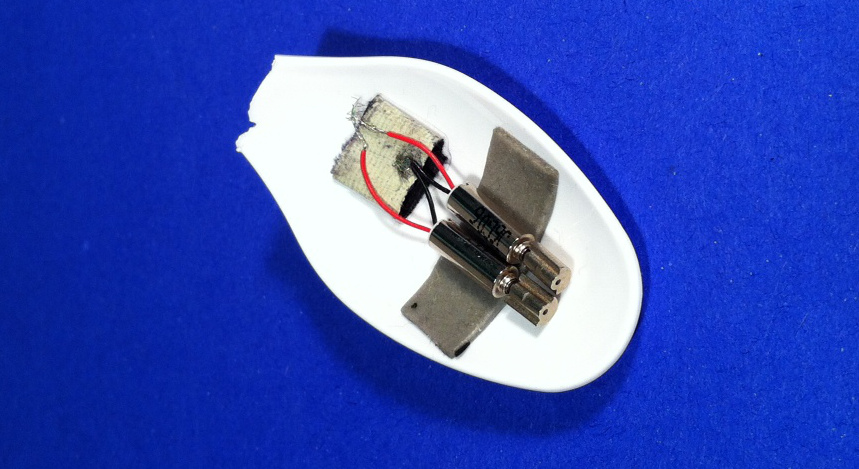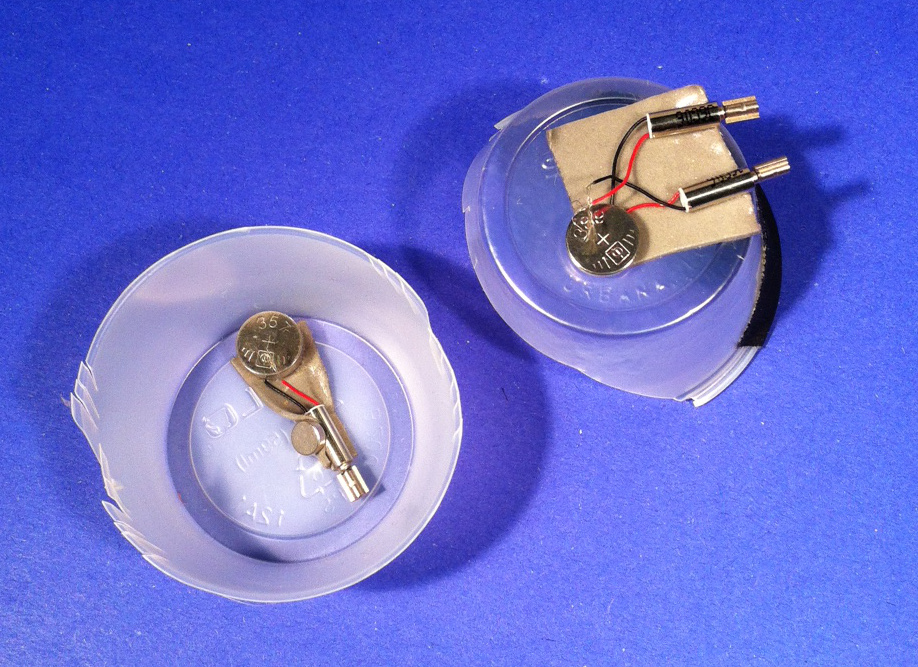 by Ted Beyer
by Ted Beyer
Bots in a Name?
Brushbots, bristlebots, scooterbots, and any other cleverly named bots have been around for years. You know—the toothbrush head (or something similar) paired with a tiny vibrating motor and a battery. For years, classroom teachers and homeschool parents have been using them to introduce even young students to the principles of engineering and robotics.
We became interested in these cute little vibrating gizmos about six years ago, having seen a very commercialized version. As happens with many of our new discoveries, essentially all work at the office came to a halt (well, except getting orders out to customers—always our top priority) for about three days as we collectively tinkered, experimented, brainstormed, modified, and re-engineered our very own collection of bots.
It started with an hour-long raid on the local pharmacy as we picked out a pile of different toothbrushes to play with. (You should have seen the look on the checkout guy’s face!)
After that, it became round after round of figuring out what kinds of motors and batteries worked well, how the different sorts of toothbrushes worked, and what other bits and pieces we might need. As we played with the candidates, we ended up adding many more “what if” questions. Our time as bot engineers is remembered by all of us who were part of it as some of the most fun we’ve had at work.
Imagine: no rules, just a few principles, and a few very loose goals—brainstorming and collaboration—(and a little competition) were the order of the day.
Bot #1
Here’s a pretty standard fellow: a cut down toothbrush head, a battery, and a motor. We learned fast that outriggers were essential to help stabilize these little guys. How to make them travel in straighter lines? We trimmed the bristles in any number of ways, and got some interesting—and unexpected—results.
Bot #2
Several of us are into aviation (Tami was a pilot for many years), and we knew that in many twin engine aircraft, it is fairly common to have the two propellers turning in opposite directions in order to offset the effects of torque. Hey! How would that work with one of our little bots? We tried it out—adding a second motor, and reversing the polarity of one of them so it spun in the opposite direction.
It was actually quite simple to do, and it made for an elegant vehicle.
Bot #3
What if we take that in another direction and add a second motor to the opposite end, instead of side-by side? And hey—we can try that so they are spinning the same way, or we can make this one contra-rotating as well. How does that work?
Bot #4
Someone tried to build a giant earthbound ocean liner of a bot using a full sized, untrimmed toothbrush, and a 3v battery for extra power, and a lot of outriggers.
Bot #5
Wait—do we need a brush at all? What if we go to sea? Here is an idea we tried. We used, of all things, the bowl of a plastic spoon with a contra-rotating motor set-up and a keel made of tape.
Bot #6
These portion cup bots were another non-brush based project. The cut-away portions were an attempt to add more directional stability, as was the tape on the edges.
And Away We Bot…
We had races and contests galore. We even fashioned a Bot Corral from a short length of rope to contain our menagerie of tiny critters because they kept trying to escape!
So what happened?
A long forgotten interruption cropped up, and we put all of our new toys away to tackle whatever the seemingly more important issue was. Time passed, and we just put the entire project aside…
…Until Fall 2015
We actually had time to start digging through a pile of accumulated stuff. Lo and behold, there was the box, long untouched, containing all of our little friends, almost screaming for us to take them out and play with them again.
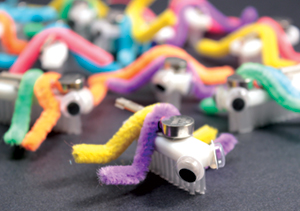 As we sorted through the collection, memories of how and why we did what we did came flooding back—and we realized not only how much we had learned, but how much FUN we had while learning it.
As we sorted through the collection, memories of how and why we did what we did came flooding back—and we realized not only how much we had learned, but how much FUN we had while learning it.
This time we would not let the project sink back into obscurity—we decided we had to make a kit.
So we did. Introducing our ScooterBots!
We can say this: the things we COULD have put into the kit, but did not, would take endless pages to detail. This activity is startlingly open ended; almost anything can be added or experimented with. Dozens of variables just beg to be investigated. Invent your own challenges—how far, how long, how light, how heavy?
There is only one limitation to be found here: the imagination of the budding engineer!
